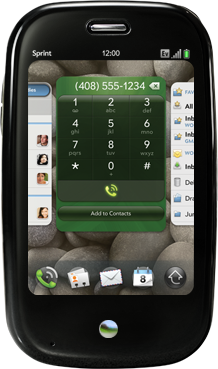 A popular theory of the past few years that has worked its way into the web/business/usability spheres is that more choices are worse. Essentially the idea is that people get stressed out and balk at making choices. If you order a chicken salad and you’re given one, you’re happy. If they ask you if you want your chicken from California or Canada or Mexico, and your mayonnaise from Vermont or Cape Cod, you get less happy. The idea was largely popularized by the book Paradox of Choice, which I haven’t read but apparently goes over the theory ad nauseam.
A popular theory of the past few years that has worked its way into the web/business/usability spheres is that more choices are worse. Essentially the idea is that people get stressed out and balk at making choices. If you order a chicken salad and you’re given one, you’re happy. If they ask you if you want your chicken from California or Canada or Mexico, and your mayonnaise from Vermont or Cape Cod, you get less happy. The idea was largely popularized by the book Paradox of Choice, which I haven’t read but apparently goes over the theory ad nauseam.
The result is that many people posing as knowledgeable on various matters have latched onto this and now add “too many choices” to their canned list of “insights”. I don’t buy it, and others are going so far as to disprove it. I think the real lesson is that choices decrease happiness when you don’t understand them. Asking me if I want my chicken from California or Canada doesn’t mean anything to me if I don’t have strong feelings about those two places, but if you said “would you like your chicken from California, which tends to be more tender, or Canada, which has lower fat”, the choice is now very valuable to me. I’m going to happier than I was without any because I know that I got the tastier or healthier one and made a good choice for me.
You can, of course, have too many choices (televisions, CPUs, wines), and you can also have too few (cable/internet service providers, political parties). When you’re deciding what to offer your current and prospective customers and users, you need to decide what makes sense for your business and them, and most importantly, you need to articulate the difference. If you can’t do that, then you can say that you have too many.

 I was impressed with the iPhone when it came out, but not enough to warrant the expense of the device and the overpriced service plan and dealing with switching carriers (especially to AT&T). I had the Spring PPC-6700 at the time, which was decent and got me hooked on having a mobile calendar and contact database without carrying a PDA. When Palm announced the Pre, I decided I would wait for it, and if it wasn’t up to snuff, I’d cave and buy an iPhone.
I was impressed with the iPhone when it came out, but not enough to warrant the expense of the device and the overpriced service plan and dealing with switching carriers (especially to AT&T). I had the Spring PPC-6700 at the time, which was decent and got me hooked on having a mobile calendar and contact database without carrying a PDA. When Palm announced the Pre, I decided I would wait for it, and if it wasn’t up to snuff, I’d cave and buy an iPhone. Watchmen is an adaptation of a comic series that should have been longer into a movie that should have been shorter. Action was slick and acting was much better than expected, but the story preserved the uneven pacing of the source rather than remedying it. A noble and ambitious attempt with mediocre results.
Watchmen is an adaptation of a comic series that should have been longer into a movie that should have been shorter. Action was slick and acting was much better than expected, but the story preserved the uneven pacing of the source rather than remedying it. A noble and ambitious attempt with mediocre results.